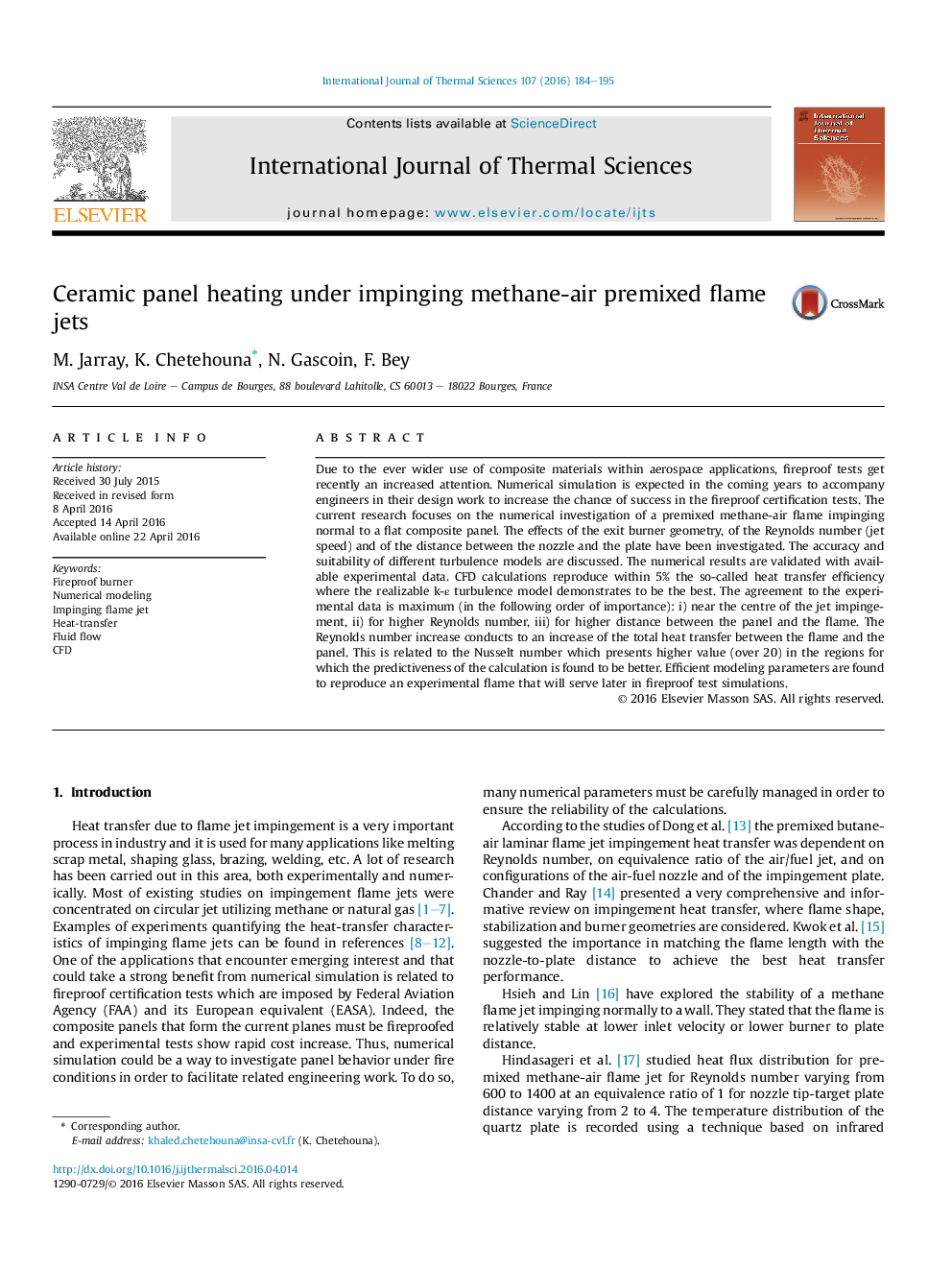| Article ID | Journal | Published Year | Pages | File Type |
|---|---|---|---|---|
| 668423 | International Journal of Thermal Sciences | 2016 | 12 Pages |
•Numerical prediction of the thermal behavior of a test panel impinged by a methane-air premixed flame jet is performed.•The numerical results are compared with available experimental data.•The influence of the geometrical distances and Reynolds number on the effectiveness of the heat transfer are presented.•The accuracy and suitability of each turbulence models are discussed.
Due to the ever wider use of composite materials within aerospace applications, fireproof tests get recently an increased attention. Numerical simulation is expected in the coming years to accompany engineers in their design work to increase the chance of success in the fireproof certification tests. The current research focuses on the numerical investigation of a premixed methane-air flame impinging normal to a flat composite panel. The effects of the exit burner geometry, of the Reynolds number (jet speed) and of the distance between the nozzle and the plate have been investigated. The accuracy and suitability of different turbulence models are discussed. The numerical results are validated with available experimental data. CFD calculations reproduce within 5% the so-called heat transfer efficiency where the realizable k-ε turbulence model demonstrates to be the best. The agreement to the experimental data is maximum (in the following order of importance): i) near the centre of the jet impingement, ii) for higher Reynolds number, iii) for higher distance between the panel and the flame. The Reynolds number increase conducts to an increase of the total heat transfer between the flame and the panel. This is related to the Nusselt number which presents higher value (over 20) in the regions for which the predictiveness of the calculation is found to be better. Efficient modeling parameters are found to reproduce an experimental flame that will serve later in fireproof test simulations.
